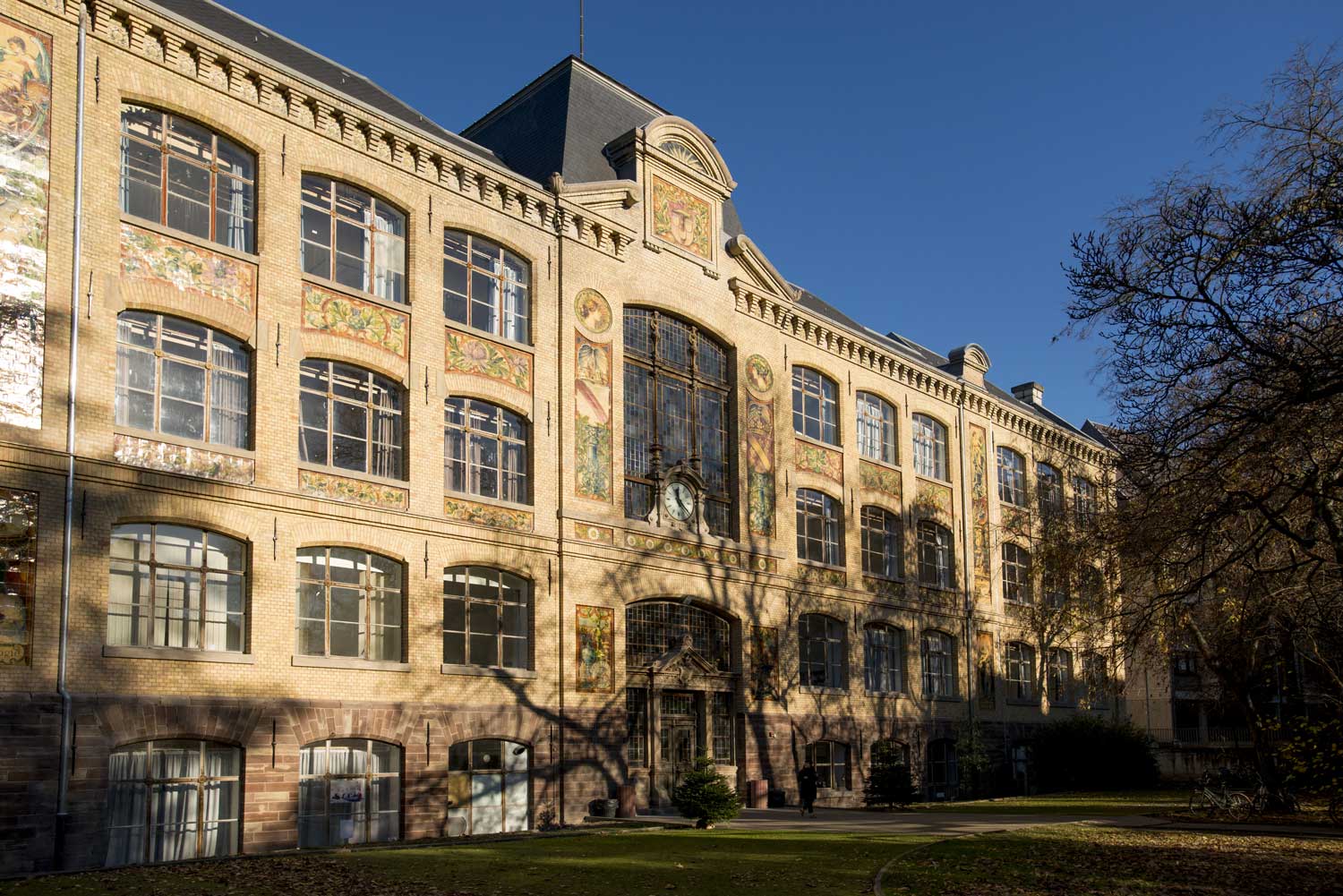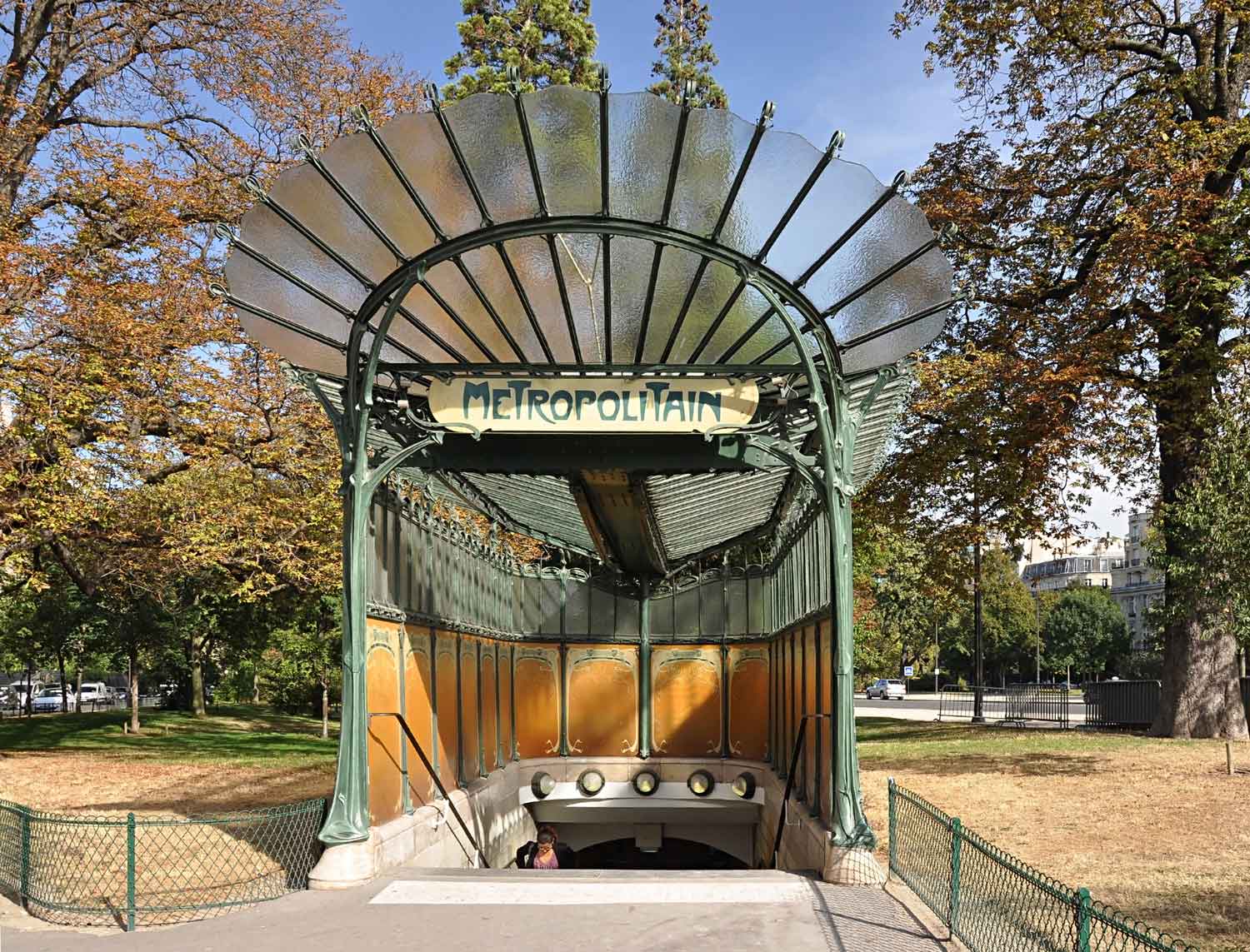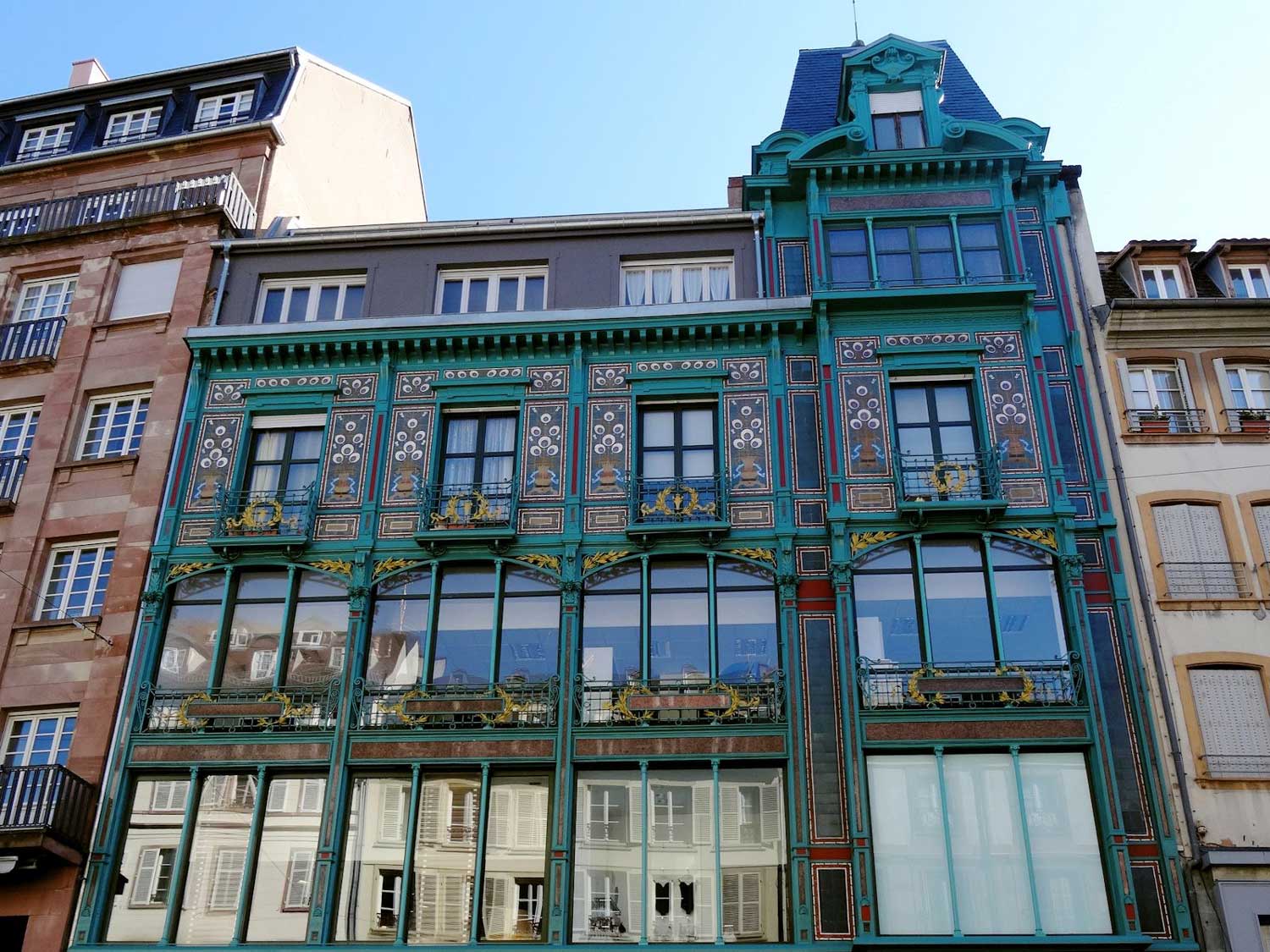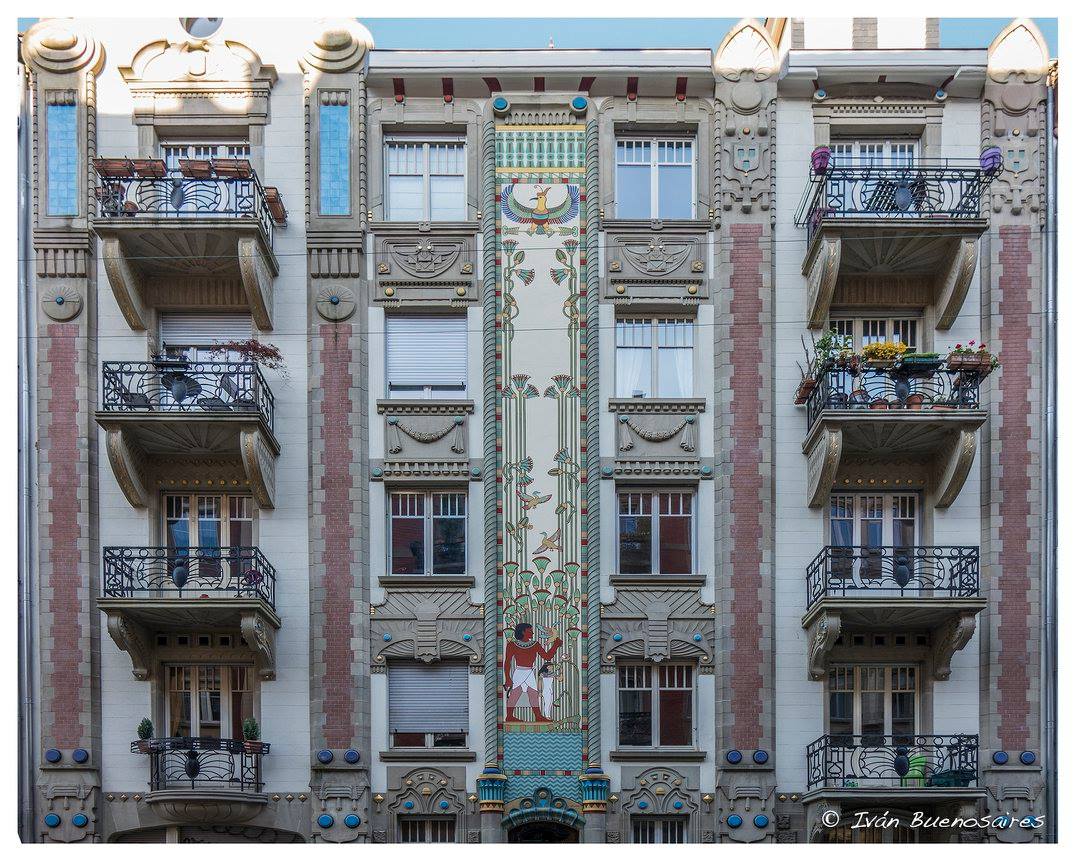Art Nouveau in Strasbourg
April 20th 2019, by Gustave
At first an ideological trend initiated by craftsmen, the Art Nouveau (literally «new art») flourishes for a very short period of time, between the last decade of the 19th century and the Great War. A short period of time, yet it left its mark on Strasbourg and still can be seen today.
The Art Nouveau: Origin and expansion
Summed up in one phrase, the Art Nouveau is «an art for everything and an art for everyone».
An art for everything as it deals with architecture, furniture (both in the private and urban spheres), graphical arts, typography, … and an art for everyone, in particular with everyday’s furnishings (dressers, desks, chairs, dishes, …)
This style shined all across Europe (and even in the United States). The fact it was expressed in each country in a sensibly different manner is its main feature. This gives it a national identity characteristic everywhere it appears. It starts in the United Kingdom under the name of «Modern Style», then crosses the Channel to be called Art Nouveau in France and Belgium, «Jugendstil» in Germany, «Sezessionstil» in Austria or «Modernismo» in Spain.
In France, the movement is very well received in Paris (you can still see today the subway entrances by Guimard) and in the School of Nancy, which will greatly influence the architects in Strasbourg. In Germany, one of the main areas from which it radiates is Darmstadt. Indeed, the Grand Duke of Hesse (a great advocate for Jugendstil) founded there an artists’ colony.
The French tendencies go to nature, floral patterns, work is done with naturalists. This is the triumph of the plant and the animal. In Germany, the artists move towards geometry and simple cubic shapes, linear ornamentation, sleek arabesques. The situation of Strasbourg is interesting, as it actually shows the fusion of those two takes on the style. This is by the way a common theme, frequently proposed in our guided tours of Strasbourg.
Strasbourg : the meeting point of German and French styles
If these works can be found for the most part in the Neustadt, the most telling example of this crossed influence can probably found on the Great Island: the former Manrique store, at 33 Great Arches street, now housing a famous brand of fast-food. It was finished in 1897 and you can see the neat lines of the window frames, where iron is mostly used: this was a time of industrial development. On the third floor, the bays make way for ceramic in the shape of bouquets of flowers, a pattern directly borrowed from French influences. And this is no coincidence! The two architects who gave birth to this building, Gustave Krafft and Jules Berninger, are both from Strasbourg and they both studied in Germany and in Paris!
On top of that, it would be improper not to mention in this article the current HEAR (Haute Ecole des Arts du Rhin, an art school), at the entrance of the Krutenau district. Totally covered in multicolor ceramic, its facade represents allegories of the school’s teachings, and is enlivened by buds, leaves, corollas of flowers… but it also sports Alsace’s and Lorraine’s coats of arms. Here is a school dedicated to the glory of renewal in Art, with a hint of all-German intentions, in the Reichsland’s capital that was annexed 21 years earlier.
Let us part ways with the Egyptian House, in General Rapp street, another beacon of Art Nouveau. It is a suprising blend of all the influences of the time, to which the owner added his own idealized vision of ancient Egypt… A journey to the land of Pharaohs!





